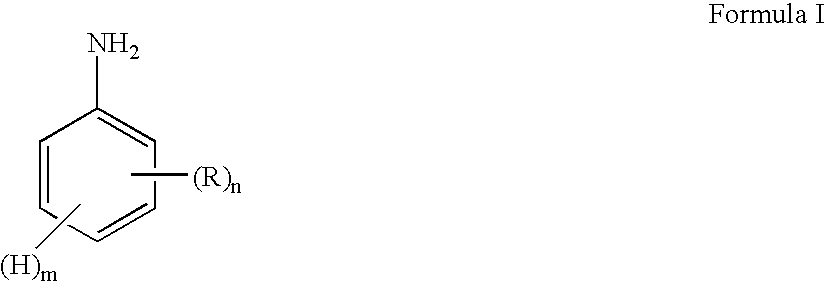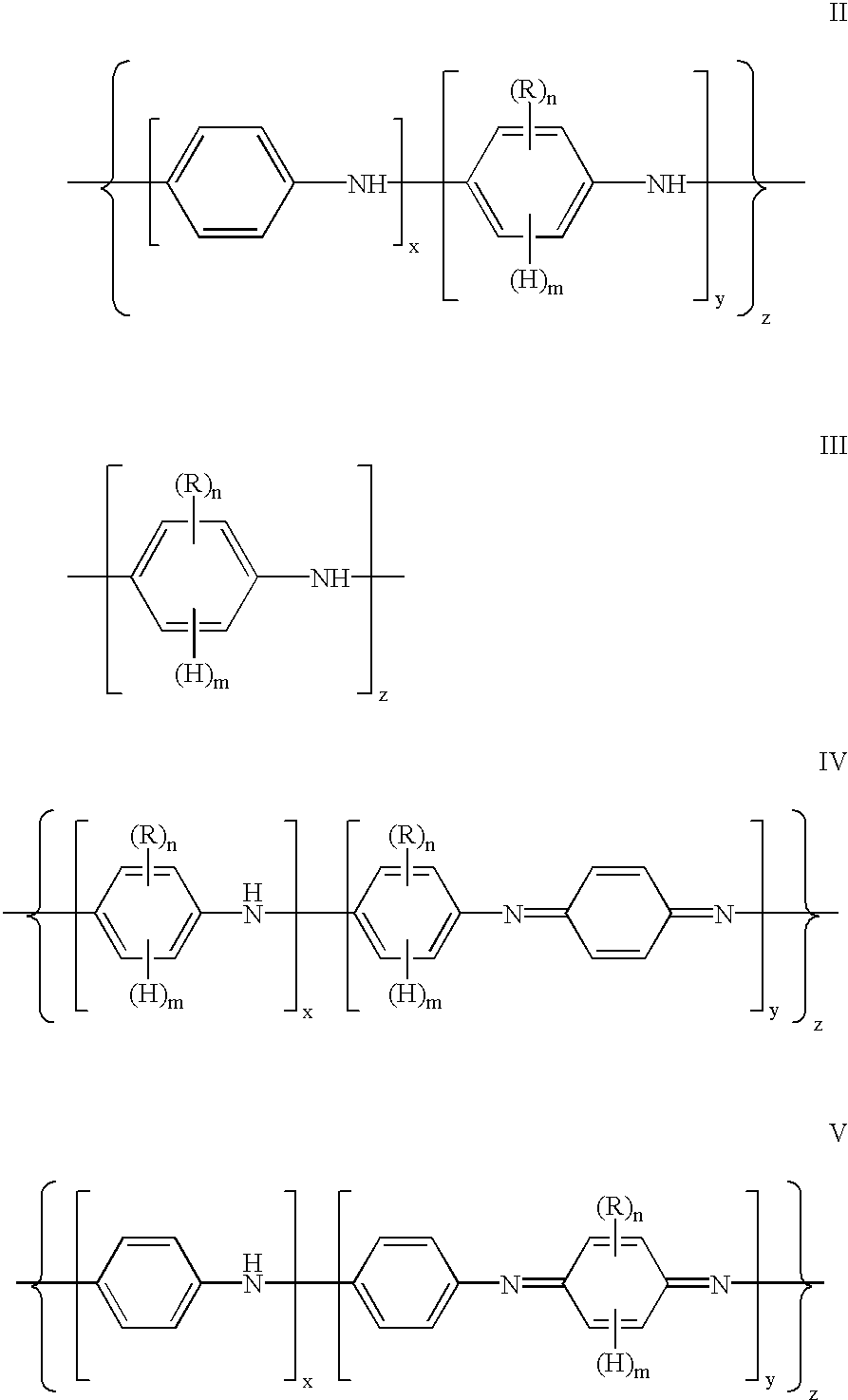Multilayer structures as stable hole-injecting electrodes for use in high efficiency organic electronic devices
a polyaniline anode, stable technology, applied in the direction of solid-state devices, electric lighting sources, electric light sources, etc., can solve the problems of long operating life, high operating voltage, and insufficient lifetime of high-resistance polyaniline devices for many commercial applications,
- Summary
- Abstract
- Description
- Claims
- Application Information
AI Technical Summary
Benefits of technology
Problems solved by technology
Method used
Image
Examples
example 1
[0171] PANI(ES) was prepared according to the following reference (Y. Cao, et al, Polymer, 30 (1989) 2307). The emeraldine salt (ES) form was verified by the typical green color. HCl in this reference was replaced by poly(2-acrylamido-2-methyl-1-propanesulfonic acid (PAAMPSA) (Aldrich). First, 30.5 g (0.022 mole) of 15% PAAMPSA in water (Aldrich ) was diluted to 2.3% by adding 170 ml water. While stirring, 2.2 g (0.022M) aniline was added into the PAAMPSA solution. Then, 2.01 g (0.0088M) of ammonium persulfate in 10 ml water was added slowly into the aniline / PAAMPSA solution under vigorous stirring. The reaction mixture was stirred for 24 hours at room temperature. To precipitate the product, PANI(ES), 1000 ml of acetone was added into reaction mixture. Most of acetone / water was decanted and then the PANI(ES) precipitate was filtered. The resulting gum-like product was washed several times with acetone and dried at 40.degree. C. under dynamic vacuum for 24 hours.
[0172] This Example ...
example 2
[0173] Four grams (4.0 g) of the PANI(ES) powder prepared in Example 1 was mixed with 400 g of deionized water in a plastic bottle. The mixture was rotated at room temperature for 48 hours. The solutions / dispersions were then filtered through 1 .mu.m polypropylene filters. Different concentrations of PANI(ES) in water are routinely prepared by changing the quantity of PANI(ES) mixed into the water.
[0174] This Example demonstrates that PANI(ES) can be dissolved / dispersed in water and subsequently filtered through a 1 .mu.m filter.
example 3
[0175] A poly(ethylenedioxythiophene), PEDT (Baytron P. special grade, commercially available from Bayer), solution was diluted with an equal amount deionized water. The solution was stirred at room temperature overnight. The PEDT content of the solution was 0.8%. PEDT solutions were also prepared in which the content of PEDT was 0.4, 0.2 and 0.16%, respectively. All these solutions can be filtered through a 0.231 .mu.m filter.
PUM
| Property | Measurement | Unit |
|---|---|---|
| conductivity | aaaaa | aaaaa |
| thickness | aaaaa | aaaaa |
| thickness | aaaaa | aaaaa |
Abstract
Description
Claims
Application Information
 Login to View More
Login to View More - R&D
- Intellectual Property
- Life Sciences
- Materials
- Tech Scout
- Unparalleled Data Quality
- Higher Quality Content
- 60% Fewer Hallucinations
Browse by: Latest US Patents, China's latest patents, Technical Efficacy Thesaurus, Application Domain, Technology Topic, Popular Technical Reports.
© 2025 PatSnap. All rights reserved.Legal|Privacy policy|Modern Slavery Act Transparency Statement|Sitemap|About US| Contact US: help@patsnap.com



